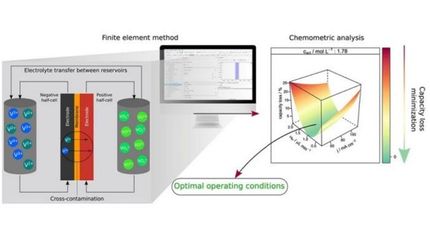Technology to "see" into commercial batteries
Monitoring and studying battery chemistry is crucial to improving battery design
Advertisement
A multidisciplinary research team involving scientists from Collège de France, CNRS, Université Rennes 1 and Université de Montpellier has developed a method to track the chemistry inside a battery, live, and throughout its multiple charges and discharges. Presented in Nature Energy on November 7, 2022, this technology paves the way for improving the performance and design of future batteries.
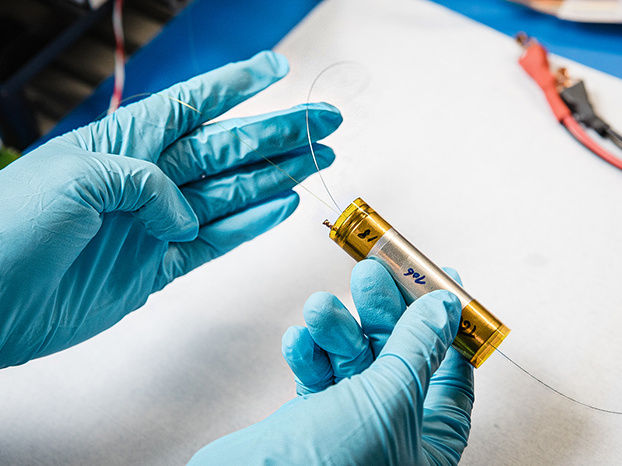
Battery crossed by a chalcogenide glass optical fiber allowing to transport light in the infrared range. The interaction of this light with the constituents of the battery allows to identify and follow the chemical molecules present around the fiber.
© Frédérique PLAS / CSE / CNRS Photothèque
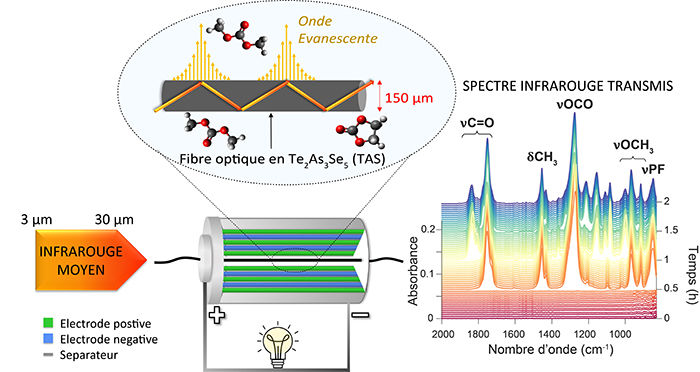
Diagram of the propagation of infrared light through the core of a glass optical fiber of composition: Te2As3Se5 (TAS). At the surface of the fiber, an evanescent wave is created and can interact with the surrounding molecules. The TAS fiber is passed through a vacuum in the center of a 18650 battery. The chemical bonds corresponding to the electrolyte can thus be observed during its use.
© Gervillié-Mouravieff et al./Collège de France
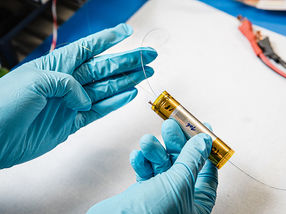
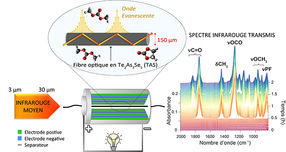
Batteries offer the ability to store energy in chemical form: during charging, the current forces chemical reactions and energy is stored, then during discharging a spontaneous electrochemical reaction causes the electrons to move back through the system. Energy is released to create an electric current.
Controlling and studying the chemistry of a battery is therefore crucial to understanding how it works, but also to improving its design. While this is easy to do in the laboratory, it is much less easy when it is integrated into a system. But a multidisciplinary research team1 led by scientists at the Solid State and Energy Chemistry Laboratory (CNRS/Collège de France/Sorbonne University) has just developed a method for monitoring the chemistry of a commercial battery, live, during its charge or discharge.
The technology, presented in a paper published in Nature, relies on the transport of infrared light in chalcogenide glass optical fibers placed through a battery. The interaction of this light with the constituents of the battery makes it possible to identify and follow the chemical molecules present around the fiber.
The researchers were thus able to observe the evolution of the electrolytes as well as the insertion/extraction of sodium-lithium ions in the electrodes according to the charge. And this while it was in use, a first! With this system, the scientists were also able to study the interface between the electrolyte and the negative electrode material called Solid electrolyte interphase (SEI). This layer, which conducts ions and insulates electrons, determines the longevity of the batteries. In particular, the team was able to follow in situ the nature of the chemical species involved in the nucleation and growth of the SEI that takes place during the very first charge of a battery.
From a practical point of view, these results open the way to a facilitated and improved design of batteries. Currently, the optimization of electrolytes and charge test protocols is time consuming to find the best option for an ideal SEI, and thus improve the longevity of a battery. With this new method, it is possible to quickly and accurately see how each component of the recipe evolves, interacts with the others and influences the performance of the battery. The research team is continuing its work with a focus on SEI and hopes to unlock all its secrets.
Note: This article has been translated using a computer system without human intervention. LUMITOS offers these automatic translations to present a wider range of current news. Since this article has been translated with automatic translation, it is possible that it contains errors in vocabulary, syntax or grammar. The original article in French can be found here.
Original publication
Charlotte Gervillié-Mouravieff, Catherine Boussard-Plédel, J. Huang, Cédric Leau, L. Albero Blanquer, Mouna Ben Yahia, Marie-Liesse. Doublet, S. T. Boles, Xianghua H. Zhang, Jean-Luc Adam et Jean-Marie Tarascon; "Unlocking cell chemistry evolution with in-operando fiber optic IR spectroscopy in commercial Na(Li)-ion batteries."; Nature Energy, 2022.
Other news from the department science
Most read news
More news from our other portals
See the theme worlds for related content
Topic World Battery Technology
The topic world Battery Technology combines relevant knowledge in a unique way. Here you will find everything about suppliers and their products, webinars, white papers, catalogs and brochures.

Topic World Battery Technology
The topic world Battery Technology combines relevant knowledge in a unique way. Here you will find everything about suppliers and their products, webinars, white papers, catalogs and brochures.



